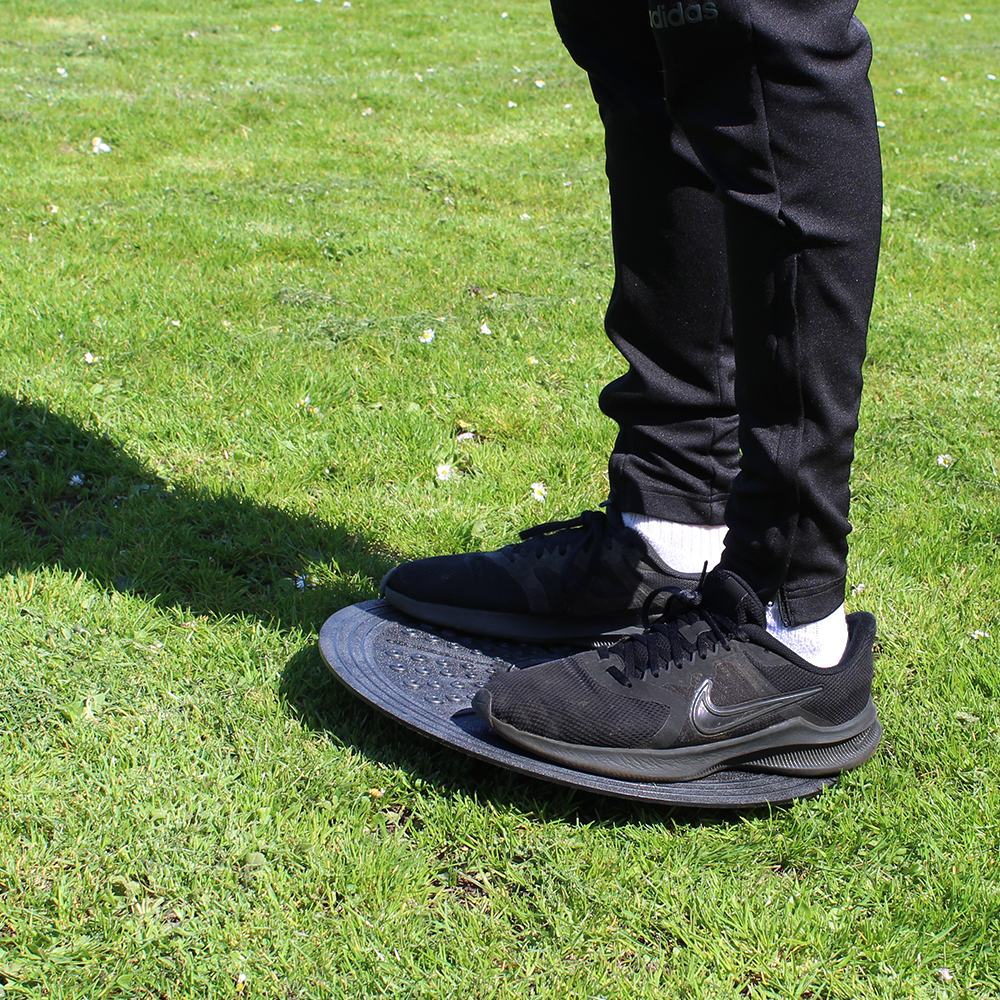Hey! I'm here to talk about one of the most overlooked, but super important topics in fitness: ankle stability. If you're an active person, you know how important it is to have strong, stable ankles. Ankle sprains are super common, and not only are they painful, but they can keep you out of your favorite workout gear for way too long. The rehab process can be frustrating, and even when you're not in pain, you may feel a little "wobbly" and unsure of yourself, making it hard to get back to normal activities. But adding balance training to your rehab can make all the difference.
What's going on with your ankle?
Ankle injuries are super common, and athletes and non-athletes alike can suffer them. Sprains make up about 80% of ankle injuries, and occur when the ligaments surrounding the ankle joint stretch or tear. You'll typically feel pain, swelling, and a whole lot of instability after a sprain. If you let sprains go untreated, you may end up with chronic ankle instability (CAI), which is characterized by ongoing instability and repeated sprains. Let's dive into what causes ankle sprains, and how you can prevent them.
What is a balance board?
A balance board, also called a wobble board, is a simple, yet powerful tool that can help improve balance, stability, and proprioception. It's a flat surface mounted on a pivot or ball, allowing it to move in multiple planes of motion. Balance boards are commonly used in sports medicine and physical therapy settings, and are a game-changer for ankle rehab and stability. They work by challenging your ankle and foot to stabilize on an unstable surface, engaging your tiny foot muscles and improving proprioception.
What are the benefits of balance board training?
Adding balance board training to your routine can be super beneficial, especially if you're working on rehabbing an ankle injury or just want to improve stability. Here are some of the benefits:
-
Improved ankle stability and proprioception

- Strengthened intrinsic foot and ankle muscles
- Better balance and coordination
- Reduced risk of future ankle sprains
- Increased ankle range of motion and control
- Low-impact, low-risk rehab and injury prevention
Adding balance board exercises to your routine can not only improve ankle stability, but reduce your risk of injury and take your athleticism to the next level.
Rehab compliance and injury rates
In a recent study, not one participant sprained their ankle over an 8-week period. Three participants suffered non-ankle injuries, but they didn't affect stability, ground reaction forces, or pain levels. Only 1 participant complained about rehab, and overall compliance was at 95%. Balance board training was also identified as a key component of lower leg rehab, especially for ankle sprains. Participants who trained on the board had significantly better proprioception and were much less likely to suffer future sprains.
What about chronic ankle sprains?
No sprains over 8 weeks
Not one participant suffered a recurrent ankle sprain over the 8-week period. I don't have the data on their injury rates prior to the study, but we know that college athletes in sports like football, soccer, and basketball have an average injury rate of about 1.28 ankle ligament sprains per 1,000 athlete exposures. I don't know the exact injury rates of the participants in this study, but I do know that proprioception is key to preventing sprains.

What is proprioception?
Proprioception is your body's ability to sense where your joints are moving in space. After an ankle sprain, the nerve endings in your ankle send important messages to your brain about ankle position. As proprioception improves, you may feel more stable and confident, but you're also at higher risk for future sprains. It seems counterintuitive, but it's true. Balance training, especially single-leg training, is one of the most effective ways to improve proprioception.
Wobble boards to the rescue (again)
We've seen studies that show specific wobble board exercises can help alleviate symptoms and improve function in patients with chronic knee instability. Rocking the board from side to side can also help with balance and proprioception.
How do I stabilize my ankle?
Besides a balance board, there are other ways to stabilize your ankle. Orthotic bandages or straps can provide support and help prevent wear and tear on your ankle. If you're using a support, make sure you wear it consistently. If you're doing heel raises, squats, or balance board exercises, start on a wider stance (shoulder-width apart) to feel more stable and improve proprioception.
How do I train my ankle muscles?
Balance board planks are one of my favorite ways to train the ankle muscles. Committing to balance board training can not only save your ankles, but set you up for a stronger, more balanced fitness future.






